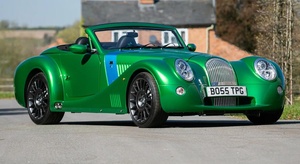The Navy has more aircraft than the Air Force last I heard.
I am not advocating a foam wing but a foam/composite wing like used in model airplanes some of which way a lot more than 55lbs. AMA suggested limit is 55 lbs and my biggest planes are about 10 lbs.
You can use MDF spars, plywood, or carbon fiber epoxied to the foam. Then the wings are typically sheeted in lightweight balsa and then finer glassed. It makes for a much lighter, much stronger and better surface quality than a built up wood wing. They are also easier to repair.
Typically a foam wing will have spars and wooden leading and trailing edges. They add rigidity and are easier to shape when the composite sandwich is complete.
Pick your airfoil based on lift and drag properties. You "could" have different airfoils to change downforce and drag for different tracks. You can also change angle of attack to change downforce and drag up to a point.
A good start on airfoil data are the various NACA databases. The data are recorded in stations percent. So you pick your "chord" or airfoil length at 10 inches or so. The airfoil will tell you in percent of chord the percent above and below the centerline for each station. By picking a known airfoil you can know drag, center of pressure, coefficient of lift and acceptable ranges for angle of attack.
I actually have a few great books on airplane design if you want to go nuts. Yes, I have built and flown airplanes where I started with blank paper amd a pencil. One modeling book is actually highly valued by aeronautical engineers it is do good. Street value last I checked is textbook price for a paperback.
After you choose your airfoil, chord, width and get your core, you will need to make spars. You can simply glue some carbon fiber strips down and add leading/trailing edges, but I'd probably go with MDF for a car wing. I might add a few CF strips too.
I'd actually cut the core vertically and probably insert a full height MDF spar right at the center of lift for that airfoil.
Then I'd probably do carbon fiber strips in front of and to the rear (half way forward and aft) the full length. Then I'd cut the core front and rear off and add MDF leading and trailing edges.
Then since its a car, I'd do fairly thick balsa skins. These skins are made joining balsa sheets on edge and cut to shape. Once glued on you can stack them in the opposite shaped foam blocks and make a weighted sandwich or you can vacuum bag it. Then you sand it to final shape. Then you glass it.
You will end up with a better to spec, lower drag, lighter, stronger wing than you can make from any wood.
Airfoil database: http://airfoiltools.com/search/index?m%5Bgrp%5D=naca4d&m%5Bsort%5D=1
Links on this page for installing spars and sheeting a foam core.
http://www.eurekaaircraft.com/foamwings/
If I had a dedicated track car, I'd probably build aluminum uprights and have them drilled for one chord length, multiple angles of attack and mounted to the car at even spacing. I'd probably start with a NACA 0009 and 2412 airfoil and rock on. If I needed something with more downforce than an upside down 2412, I'd check the database for something less symmetrical. I'd do a convex high lift airfoil before a flat bottom too, less drag in some cases and more downforce (when flipped).
Oh and here are some of my planes, some built some bought.








































